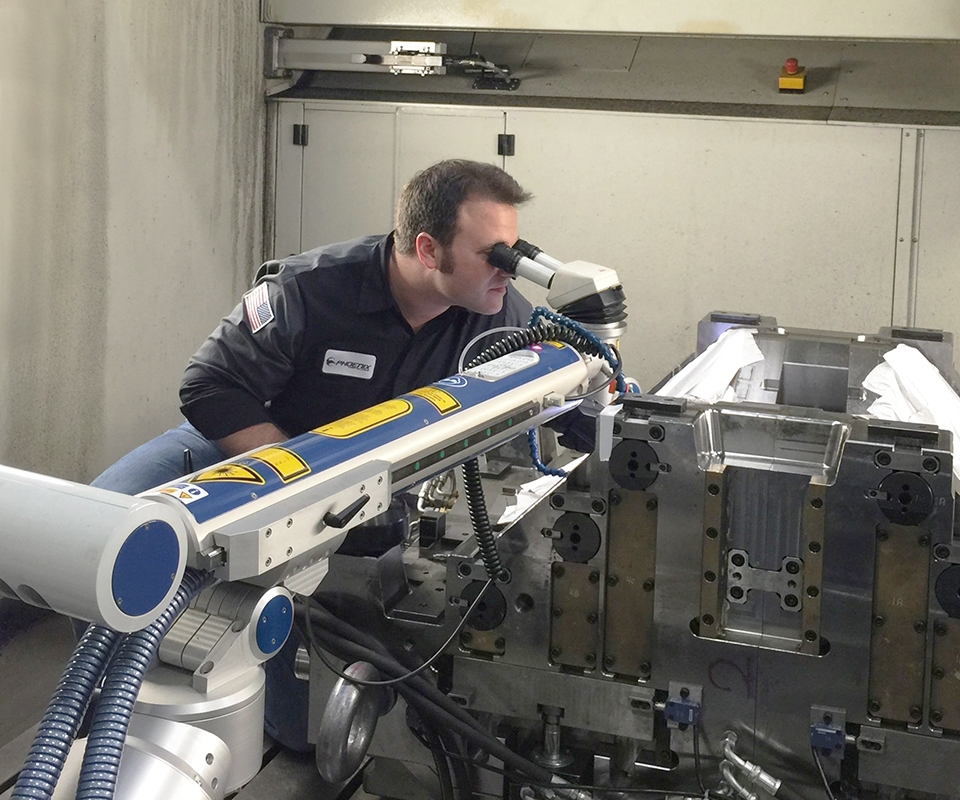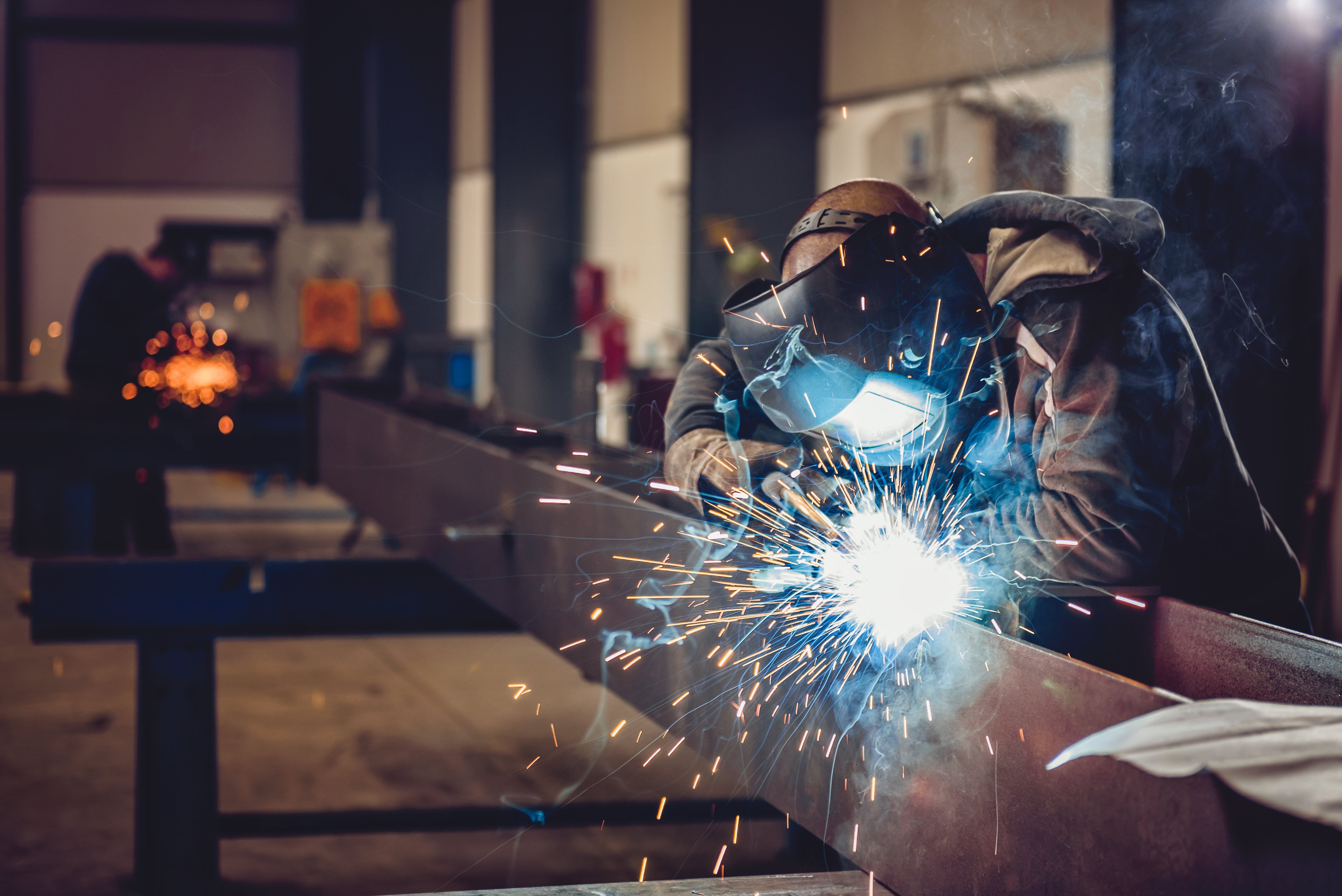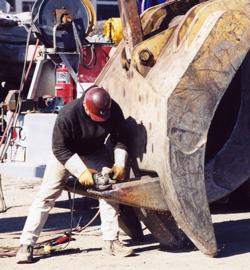Analyzing cracking in welds and how Montana Mobile Welding and Repair Belgrade Welding solves it
Typical Welding Repair Service Issues and Exactly How to Address Them Effectively
Welding fixings typically experience a variety of issues that can endanger the stability of the end product. Usual problems include inadequate penetration, porosity, and misalignment, to name a few. Each problem presents unique difficulties that call for details approaches for resolution. Recognizing these concerns is important for welders aiming to boost their end results and abilities. This conversation will certainly check out these typical welding repair service concerns and reliable approaches to address them.
Poor Infiltration
Poor penetration happens when the weld metal stops working to completely fuse with the base material, causing weak joints and potential architectural failures. This problem frequently originates from insufficient heat input, wrong electrode angle, or inappropriate welding speed. Welders may experience poor penetration due to a mistake of the essential parameters for a details material thickness or type. Furthermore, contamination on the base material's surface area can prevent reliable bonding, exacerbating the trouble. To attend to inadequate infiltration, welders ought to guarantee proper settings on their tools and maintain a tidy job surface area. Routine examination of welds is suggested to recognize any shortages early, enabling timely modifications and the prevention of endangered structural stability in bonded assemblies.
Porosity
Porosity is a typical defect in welded joints that manifests as little gas bubbles entraped within the weld metal. This flaw can compromise the stability of the weld, bring about minimized strength and potential failing under anxiety. Fabrication. Porosity commonly arises from contamination, dampness, or improper welding strategies, which allow gases to escape right into the molten weld pool. To address porosity, welders should assure proper surface preparation, maintain a tidy working setting, and use appropriate welding specifications. In addition, selecting the appropriate filler material and shielding gas can minimize gas entrapment. Regular inspection and testing of welds can help determine porosity early, guaranteeing timely restorative actions are taken, consequently maintaining the top quality and integrity of the bonded framework
Misalignment
Misalignment in welding can occur from various aspects, consisting of improper setup and thermal growth. Understanding the root creates is necessary for reliable resolution. Numerous modification strategies are offered to straighten components and assure architectural stability.
Sources of Imbalance
Welding misalignment frequently comes from a selection of underlying problems that can jeopardize architectural honesty. One main reason is inappropriate fit-up of elements before welding, which can result in gaps and irregular surfaces. Variants in thermal growth throughout the welding process can additionally result in distortion, particularly if the products being joined have various coefficients of growth. In addition, insufficient fixturing and clamping may fall short to hold elements firmly in location, bring about activity during welding. Improperly maintained tools, consisting of welding equipments and devices, may present incongruities in the weld bead, additional adding to imbalance. Driver mistake, stemming from not enough training or experience, can likewise play a significant function in creating misaligned welds.

Improvement Strategies Available
Dealing with misalignment efficiently needs a mix of rehabilitative strategies customized to the certain problems available. One typical technique is the usage of fixtures or jigs to hold components in the proper placement throughout welding, guaranteeing consistent alignment. In addition, pre-heating the products can aid minimize distortion and boost fit-up. For considerable misalignment, mechanical adjustment methods, such as using hydraulic jacks or clamps, can be utilized to remedy the position prior to welding. Post-weld warmth therapy might likewise be needed to relieve stresses triggered by imbalance. Careful inspection and adjustment during the setup stage can avoid misalignment problems from ending up being considerable problems, advertising a smoother welding process and improving overall structural stability.
Distortion
Distortion is a typical difficulty in welding that can develop from various elements, consisting of uneven heating & cooling. Understanding the sources of distortion is crucial for executing efficient prevention strategies. Addressing this issue not only improves structural stability yet also improves the total quality of the weld.
Causes of Distortion
When subjected to the extreme warmth of welding, products typically undergo adjustments that can cause distortion. This phenomenon mostly develops from thermal development and contraction throughout the welding process. As the weld location warms up, the material broadens; upon air conditioning, it contracts, which can create inner stresses. Furthermore, uneven heating across a work surface can worsen these anxieties, leading to warping or flexing. The kind of material additionally plays a considerable role; metals with differing thermal conductivity and coefficients of expansion may respond in a different way, leading to unpredictable distortions. Bad joint style and inadequate fixturing can contribute to misalignment throughout welding, boosting the probability of distortion. Comprehending these causes is necessary for efficient welding repair work and prevention strategies.
Avoidance Techniques
Efficient prevention methods for distortion during welding concentrate on controlling warm input and ensuring correct joint design. Keeping a consistent heat input assists to lessen thermal expansion and tightening, which can result in distortion. Using methods such as preheating the work surface can also lower the temperature level gradient, promoting uniform home heating. Additionally, picking suitable joint layouts, such as T-joints or lap joints, can improve security and decrease stress concentrations. Carrying out proper fixturing to safeguard the workpieces in place even more help in maintaining positioning throughout the welding procedure. Staggered welding series can distribute heat extra evenly, stopping localized distortion. By using these strategies, welders can substantially lower the likelihood of distortion and boost the general top quality of their welds.
Breaking
Splitting is a typical concern encountered in welding fixings, typically arising from various elements such as inappropriate cooling prices, product option, or insufficient joint prep work. The portable stick welder incident of fractures can considerably endanger the stability of the weld, bring about possible failures during operation. To address this concern, welders must initially analyze the root creates, making sure that products are suitable and suitably chosen for the specific application. Furthermore, controlling the air conditioning rate during the welding procedure is vital; rapid air conditioning can induce anxiety and bring about splitting. Appropriate joint design and preparation also add to lessening the risk. Carrying out these approaches can improve weld quality and sturdiness, eventually reducing the likelihood of cracking in finished weldments.

Incomplete Combination
A significant problem in welding repair work is insufficient fusion, which happens cigweld 185 ultra when the weld steel does not sufficiently bond with the base product or previous weld passes - Montana Mobile Welding and Repair. This issue can bring about weaknesses in the joint, possibly jeopardizing the stability of the welded framework. Variables adding to insufficient fusion consist of not enough warmth input, incorrect welding method, and contamination of the surfaces being joined. To resolve this issue properly, welders ought to guarantee appropriate pre-weld cleaning and surface preparation, in addition to readjust their welding criteria to accomplish sufficient penetration and blend. Normal assessment during the welding process can also aid recognize insufficient combination early, permitting for prompt restorative actions to improve the overall high quality of the weld
Overheating
While welding repair services can improve architectural stability, overheating provides a significant challenge that can lead to product deterioration. Extreme warm throughout welding can change the mechanical residential or commercial properties of steels, resulting in lowered stamina, raised brittleness, and warping. This sensation is specifically critical in high-stress applications where architectural reliability is extremely important. Recognizing overheating can entail visual examinations for staining or distortion, along with monitoring temperature during the welding procedure. To minimize the dangers connected with getting too hot, welders should utilize appropriate strategies, such as controlling warm input, adjusting travel rate, and making use of suitable filler products. In addition, implementing pre- and post-weld warmth therapies can help restore product residential properties and enhance the overall top quality of the repair, making certain Get More Information long-term efficiency and safety.
Often Asked Questions
What Are the Typical Indicators of a Welding Issue?

Exactly How Can I Check My Welds for Quality?
To check welds for top quality, one can use visual inspections, ultrasonic testing, and radiographic techniques. Each method ensures structural integrity, recognizes defects, and verifies adherence to defined criteria, eventually improving the reliability of the welded joints.
What Security Precautions Should I Take While Welding?
When welding, one must focus on security by wearing proper individual safety tools, making certain correct ventilation, safeguarding combustible products away, keeping a clean workspace, and understanding surroundings to avoid accidents and injuries.
Can I Fix a Weld Without Redesigning the Entire Joint?
Repairing a weld without redoing the entire joint is possible, depending upon the damage (Belgrade). Strategies such as grinding, adding filler material, or using a welding procedure can efficiently address details problems while protecting the surrounding framework
What Tools Are Important for Reliable Welding Repair Works?
Vital devices for efficient welding repairs consist of a welding device, cord brush, grinder, safety gear, clamps, and filler materials. Each device plays an essential role in ensuring high quality and security throughout the repair service process. Porosity generally emerges from contamination, wetness, or improper welding methods, which permit gases to get away right into the molten weld pool. Inadequately kept tools, consisting of welding makers and devices, may present variances in the weld grain, further adding to misalignment. When subjected to the extreme warm of welding, products usually go through changes that can lead to distortion. Splitting is an usual issue experienced in welding repair services, commonly resulting from different factors such as incorrect air conditioning prices, product selection, or inadequate joint preparation. A considerable concern in welding repairs is incomplete fusion, which takes place when the weld steel does not sufficiently bond with the base product or previous weld passes.